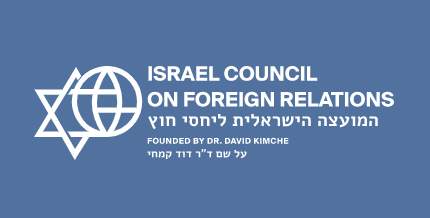
Anyone who did not experience life in Eastern Europe before the momentous events of 1989 that
toppled the Communist regimes there may be surprised by the occasional whiffs of nostalgia
emanating from the pages of Timothy Garton Ash’s latest ruminations on the recent history and
continuing evolution of the region. “Communism, not least through its slower economic
development, had a paradoxically conservative effect,” the Oxford professor of European studies
writes. “Ideas were taken as seriously as armies. Religion still mattered … .There was time and
space for friendship. The West might be richer in money but the East seemed richer in time.
Conversations had a special intensity” (pp. 77–78).
As a journalist who also covered Eastern Europe before, during, and after the fall of Communism
for Newsweek, at times crossing paths with Garton Ash, who was providing commentaries for
both British and American publications such as The Independent and The New York Review of
Books, I was hardly startled to encounter the seeming contradictions contained in his new book,
Homelands: A Personal History of Europe. It bluntly describes the harsh political repression and
monstrous economic failures that characterized the countries behind what was known as the Iron
Curtain, while also evocatively capturing the “abnormal normality” of a system that ruthlessly
quashed all hopes for change, yet inspired people to “make the best” of their seemingly hopeless
situation (p. 79).
Born in London in 1955, Garton Ash speaks of his apprenticeship in the “other Europe,”
pursuing his postgraduate studies in East Berlin and later witnessing the birth of the Solidarity
movement in Poland. This fueled his conviction that “Europe, my Europe, was—and still
is—about the struggle for freedom” (p. 88).
A writer with a fluid, highly engaging style, he offers short, revealing portraits of key actors in
that drama. Władysław Bartoszewski, who survived Auschwitz and six years in prison during the
Stalinist era, “walked, ate and talked faster than anyone I have ever met,” he notes (p. 82).
Meeting him for lunch on his first visit to Poland in 1979, Garton Ash was struck not only by the
loud, rapid-fire voice of this senior member of the opposition, but also by his confident
prediction that the Russian empire would collapse by the end of the century. This was at a time
when the Cold War division of Europe appeared to be an unalterable fact of life.
Garton Ash’s focus on such actors is not simply an effective narrative device; it is a product of
his belief that the individual plays a pivotal role in the making of history. He provides an unequivocal answer to the classic question of whether history makes the man, or the man makes
history (“man” is used here for everyone, as was the prevailing practice until recently). “The
decisive role played by the individual in history was demonstrated by a system whose ideology
insisted history was made by larger impersonal forces,” he writes, pointing out the obvious irony
(p. 128).
That system, of course, was the brand of Communist rule imposed by the Kremlin. By the late
1970s, Spain, Portugal, and Greece had rid themselves of their dictatorships, but the countries on
the other side of the East–West divide were still trapped in a far more rigid system characterized
by shortages of everything from basic freedoms to housing and consumer goods. Instead of
narrowing, the gap between the two Europes kept widening. Under the sclerotic leadership of
Leonid Brezhnev, it was not just the Soviet Union but most of its vassal states that experienced
what was dubbed the “Era of Stagnation.”
Walking through the gates of the Lenin Shipyard in Gdansk on August 19, 1980, Garton Ash
witnessed the strike that gave birth to Solidarity, an unprecedented free trade union that “rapidly
became a movement of national liberation” (p. 85). He was struck by the Polish flags and a large
photo of the Polish pope, John Paul II, whose recent visit to his homeland had served as a
catalyst for change, as well as a crucifix hanging above the strike committee’s table: “A workers’
revolution under the sign of the cross!” he notes (p. 87).
Everywhere he looked, there was Lech Wałęsa, the thirty-eight-year-old unemployed electrician,
“dashing, dancing, bubbling, bouncing through it all,” who only sat still when he was taking
communion (p. 87). At that point, it was hard to imagine him emerging as the leader of a
nationwide movement, much less winning the Noble Peace Prize in 1983 after the government’s
imposition of martial law, and, in 1990, becoming the first president of a free Poland. He
exemplified Garton Ash’s belief that it is the individual who shapes history, not the other way
around.
So did Václav Havel, a hero of that era whom Garton Ash admires even more. A dissident
playwright, he spread the doctrine of “living in truth”—that is, according to his conscience,
refusing to genuflect to Communist dictates. As a result, he spent 1,351 days in prison. This gave
him the moral authority to write his brilliant, highly influential essay “The Power of the
Powerless.” Its key thesis was that even seemingly isolated acts of dissent expose the
vulnerabilities of a system based on force and lies, demonstrating that “the emperor is naked.” It
was a revolutionary theory, but Havel had no expectation that it would trigger an upheaval
anytime soon. He was as stunned as anyone when “almost in the blink of an eye, there he was up
in Prague Castle” following the success of what became known as the Velvet Revolution (p.
173).
While the courage and determination of the dissidents were the driving forces of change, much
more was needed to achieve that near-miraculous peaceful transformation. “If ever the stars
aligned for freedom in Europe, it was in the second half of the 1980s,” Garton Ash writes. The
star that aligned in the Kremlin was Mikhail Gorbachev, who took power in 1985 after his three
predecessors died in short order. His story was “rich in unintended consequences,” the author
points out. Gorbachev was “the Soviet patriot whose policies ended up destroying the Soviet
Union … the reformer who unleashed revolution” (pp. 128–29).
This is what many Westerners failed to understand about Gorbachev. When I accompanied him
on a trip to Novosibirsk in early 1995, four years after he lost power, Gorbachev was still
insisting that he had tried to save the Soviet Union, not to precipitate its collapse. “I not only
didn’t want it; I thought it would be a drama, even a tragedy,” he told me. But by largely—and
mercifully—rejecting the use of force to maintain the Soviet empire, he made it possible for
Wałęsa, Havel, and others to achieve victory. All previous attempts at revolution from within had
been stopped by Soviet tanks.
The stars had also aligned in London and Washington. Shortly before taking power, Gorbachev
met Prime Minister Margaret Thatcher, who famously announced: “We can do business
together.” But she also strongly supported President Ronald Reagan, who was far from shy about
flexing American might to challenge Communist regimes. Garton Ash points out that this
elicited jeers from many Western Europeans, and, as he admits, “I may even have done a little
jeering myself.” But he maintains that Reagan’s role “was almost as important as Gorbachev’s
when it came to ending the Cold War” (p. 130).
While generous in his praise of the heroes, Garton Ash also singles out the obvious villains. At
the top of the list is Slobodan Milošević, whom he names as the principal—but far from
only—leader responsible for turning the Balkans “into a man-made hell of fratricidal war, rape,
ethnic cleansing and genocide” (p. 180). Vladimir Putin comes in a close second. His revival of
Russian imperialism is most visible in his ongoing war against Ukraine. Yet another irony is that
this has strengthened Ukrainians’ sense of identity and turned so many others against Russia.
“Vladimir Putin, the self-styled defender of russky mir, the Russian world, has in fact destroyed
the Russian world,” Garton Ash concludes (p. 330).
All those observations are undoubtedly on target, but when Garton Ash is surveying the political
landscape in the heart of the new Central Europe, his continued propensity to categorize the
players as either heroes or villains can lead to more questionable characterizations. There is
plenty to criticize about right-wing leaders such as Hungary’s Viktor Orbán or Poland’s Jarosław
Kaczyński, for instance, but the rhetoric of their political rivals often verges on the apocalyptic.
The fact that Kaczyński’s PiS (Law and Justice Party) lost power as a result of the recent
parliamentary elections shows that the opposition’s warnings about the perilous state of Polish
democracy were certainly overblown.
Conversely, Garton Ash’s largely uncritical admiration for Germany’s Angela Merkel, whom he
describes as an “extraordinary woman” (p. 252), makes him tread lightly when it comes to her
obvious mistakes: prolonging Germany’s overdependence on Russian energy—which only
emboldened Putin—and allowing a largely uncontrolled influx of immigrants that triggered a
strong backlash against them. The latter is still very much in evidence today, as is vividly
reflected in the results of the latest Dutch elections.
But none of those reservations detract from the pleasure of reading this always thoughtful
meditation on the remarkable transformation of a continent that still inspires hope. “Today’s
Europe, for all its faults, limits and hypocrisies, for all the setbacks of recent years, is still far
better than the one I set out to explore in the early 1970s,” he writes. His measured optimism is
more than justified.









